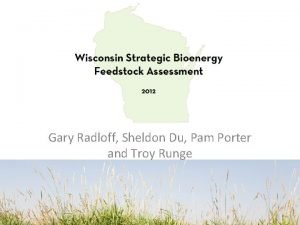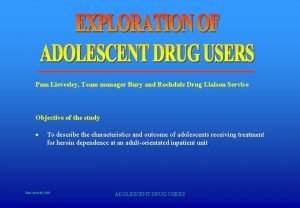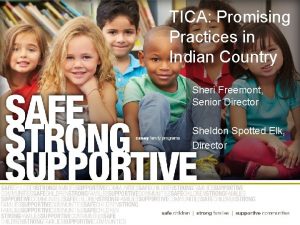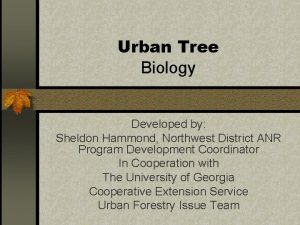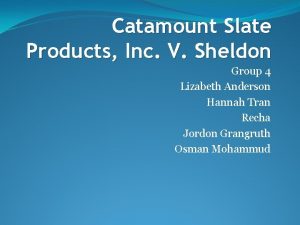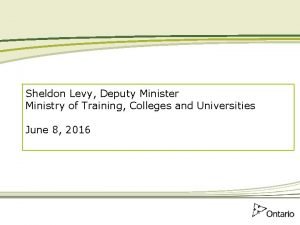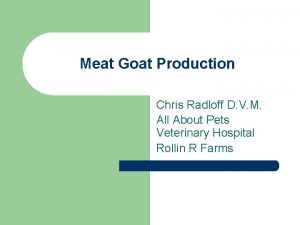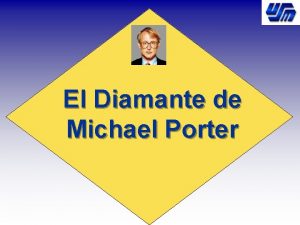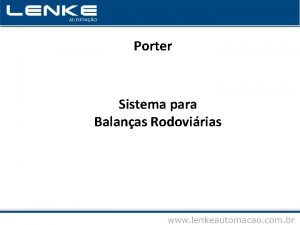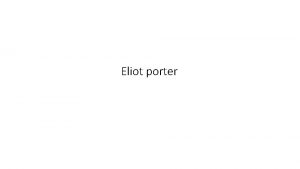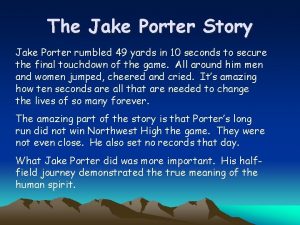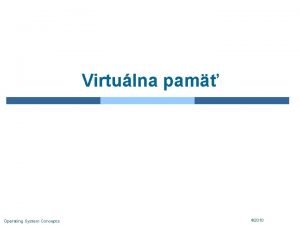Gary Radloff Sheldon Du Pam Porter and Troy



















- Slides: 19

Gary Radloff, Sheldon Du, Pam Porter and Troy Runge

Agenda • Background: Research for WI Energy Office • Quality – Survey on sample properties – Impact on conversion limitations • Quantity – Where is the biomass? – How much is available? At what cost? • Impact to current business and next steps

Theme and Topics • Planning a transition to new energy economy • Biomass is already WI leading renewable energy source – Have abundant supply for the future • Biogas leading opportunity: On-Farm AD, Wastewater Treatment Plants AD, and Landfill Diversions and CHP combinations & thermal • Need supportive public policy to achieve success in Wisconsin

Simplified Conversion Pathways Biomass to Energy/Fuels Wood Residuals Combustion Grasses & Corn Stover Pyrolysis / Gasification Solid fuels Manure Saccharification & fermentation Liquid fuels Solid Waste Anaerobic digestion Gaseous fuels Primary Heat & Power Secondary Transportation

Wisconsin Biomass Numbers Biomass Type / Estimate methodology Million Dry Tons/year Corn Stover Estimates NASS Data 2. 81 BTS Data@$60/MT 2. 49 Wood Residuals TPO Roundwood 1. 29 TPO Harvest residuals 1. 52 Energy Crops BTS Woody@$60/MT 2. 29 BTS Grasses@$80/MT 0. 15 WBA Fallow Hay/CRP 3. 13 Manure NASS Dairy Aus 4. 77

Biomass Opportunities • Identified top counties with biomass densities • Looked for natural groupings • Used circles to identify processing sites >200, 000 tons/year

Quality - Biomass Analyses • Proximate Analysis – Moistures, Volatile Matter, Fixed Carbon, Ash • Heating Value • Ultimate Analysis – C, H, N, O, S • • Cl, Hg, Mineral Ash Analysis Crude Protein Carbohydrate Lignin

Identified Thermal Conversion Issues Fuel Characteristic unit Woody Herbaceous Residuals Moisture (% wt wb) 2. 74% - 49. 94% 2. 45% - 18. 32% 6. 96% - 28. 62% LHV Btu/lb 3200 - 8946 5926 - 6923 5019 - 8145 Ash (% wt db) 0. 63% - 9. 33% 2. 66% - 10. 83% 5. 21% - 19. 38% N ppm db 200 - 10200 3700 - 15500 2500 - 42700 S ppm db 110 - 670 370 - 3130 1400 - 8590 Cl ppm db 19 - 617 293 - 6516 786 - 12550 Hg ppm db <0. 001 - 0. 024 <0. 001 - 0. 017 <0. 001 - 0. 027 Fouling Index lb alkali/MMBtu 0. 099 - 1. 471 0. 227 - 1. 919 0. 314 - 1. 482

Quality Summary • Link known technologies with Biomass based on quantity • Thermochemical Woody & Woody Waste – Combustion – Gasification • Biological Herbaceous & Herbaceous Waste – Fermentation – Anaerobic digestion

Biomass Opportunities • Manure assumed to be on CAFOs



Woody Biomass Economic Scenarios • Residuals and pulpwood markets – RPS demand for woody biomass – Biofuel feedstock demand – Pulpwood demand from pulp/paper industry – Mill capacity expands or contracts by 10% • Potential overlaps – High bioenergy demand – Expanding pulp/paper markets

Analysis Framework-Scenarios Price Sawlogs Pulp/Paper industry demand Pulpwood Bioenergy demand (RPS, RFS…) Residue Quantity

Impact to Existing Industry • Most developed biomass industry is forest products • Wisconsin has a large pulp & paper industry • What would the impact of increased woody biomass demand be? Roundwood (MCF) Sawlogs Pulpwood 360. 8 98. 2 (27%) 250. 8 (70%) Source: Wisconsin Timber Industry: An Assessment of Timber Product Output and Use in 2003. http: //nrs. fed. us/pubs/rb/rb_nrs 19. pdf

Impact on NW Region Pulpwood Market 200. 0 180. 0 174. 5 Region 3 Pulpwood Prices ($/ton) 160. 0 142. 3 140. 0 130. 2 120. 0 110. 0 100. 0 97. 9 87. 2 80. 0 85. 8 65. 6 60. 0 53. 5 42. 8 40. 0 21. 3 20. 0 200, 000 300, 000 0. 0 400, 000 500, 000 600, 000 700, 000 800, 000 Biomass Demand for T-C Conversion (tons) 10% pulping capacity decrease no capacity change 900, 000 1, 100, 000 10% capacity increase

Conclusions Wisconsin has a large amount of biomass available for bioenergy projects • Pockets of high density biomass create opportunities for aggregation • Woody biomass is only source tested to consistently have quality need for thermal conversion • With a developed forest products industry only wood residuals can be used without impacting regional wood prices – NW region of WI - 2 plants at 200, 000 ton/year each – NE region of WI - 1 plants at 200, 000 ton/year each

Conclusions Part II WI should look to investments in waste handling and processing as opportunities for energy production (wastewater treatment, landfills and industrial sites). • Biomass feedstock manure is already aggregated at CAFOs and farms, these are logical energy sites • Small to mid-size thermal is cost competitive today with propane and heating oil. WI can do much more. • Tipping Point for WI: A highly vulnerable economy dependent on global energy or innovative domestic leadership in biogas, thermal, CHP and microgrids.

Gary Radloff gradloff@wbi. wisc. edu
 Gary radloff
Gary radloff Bury pam pam
Bury pam pam Radloff middle school calendar
Radloff middle school calendar Cardinal central and secondary traits
Cardinal central and secondary traits Sheri freemont
Sheri freemont Plot diagram for the outsiders
Plot diagram for the outsiders Does sheldon cooper have autism
Does sheldon cooper have autism Nicola sheldon
Nicola sheldon Sheldon hammond
Sheldon hammond The sheldon trust
The sheldon trust Youtube.com
Youtube.com Sheldon joyner
Sheldon joyner Sheldon stone physics
Sheldon stone physics The sheldon group
The sheldon group Sheldon cuffie
Sheldon cuffie Sheldon russell curtis
Sheldon russell curtis Sheldon levy
Sheldon levy Sheldon wilkinson
Sheldon wilkinson August wilson fences analysis
August wilson fences analysis Hard to seem won
Hard to seem won
